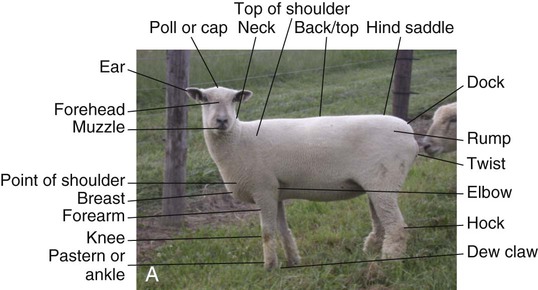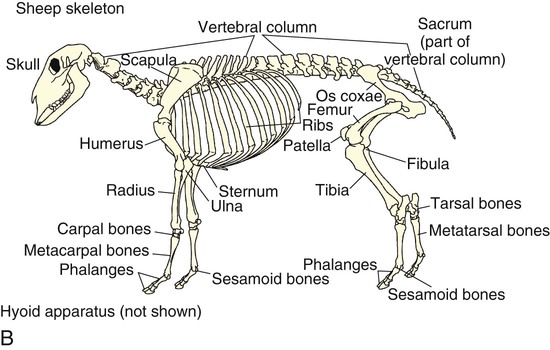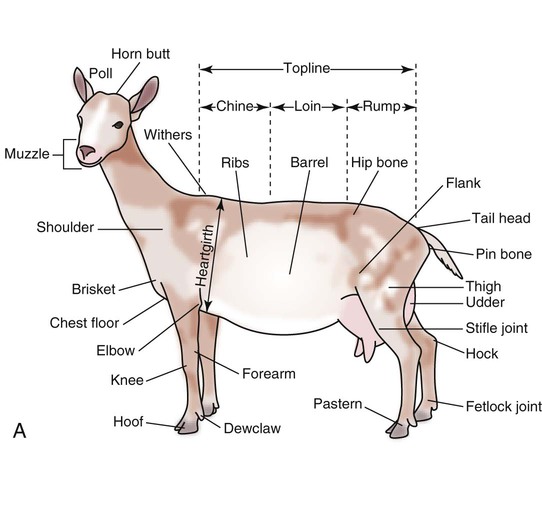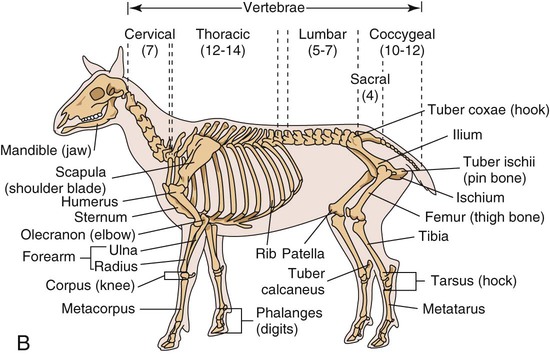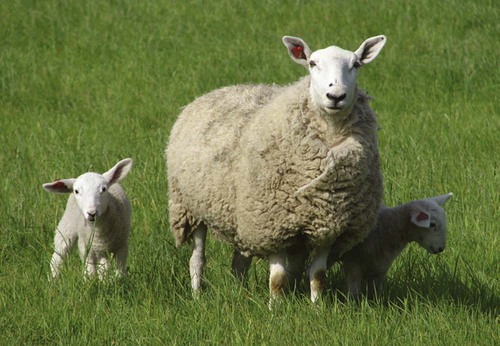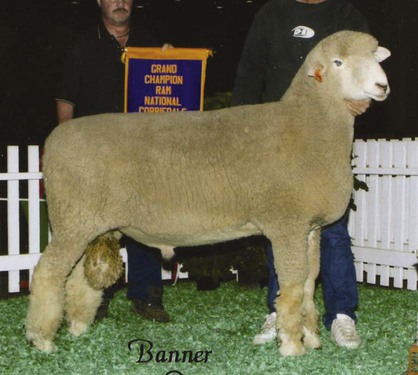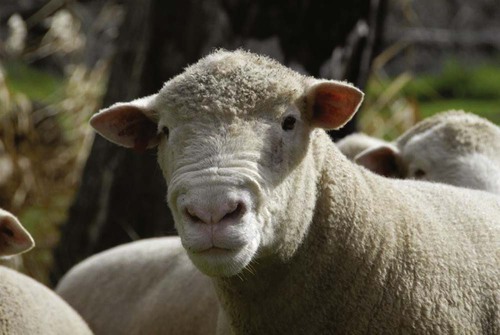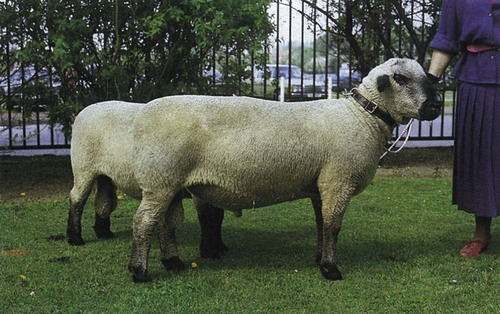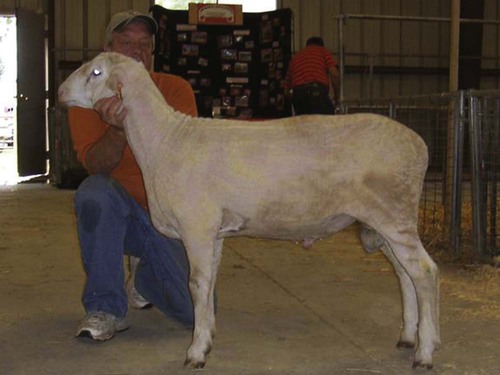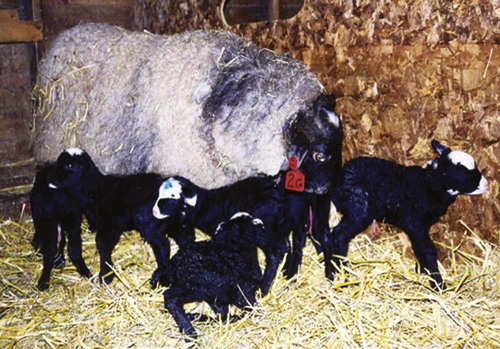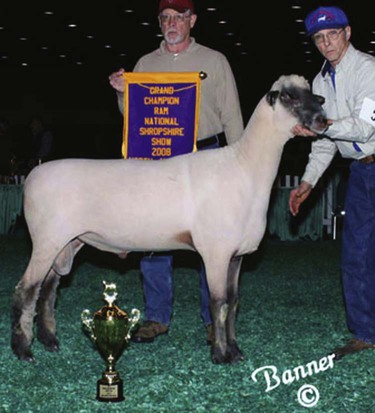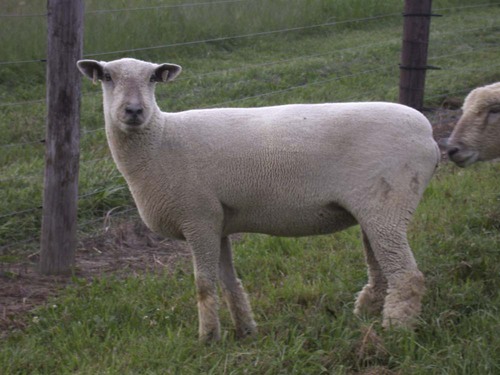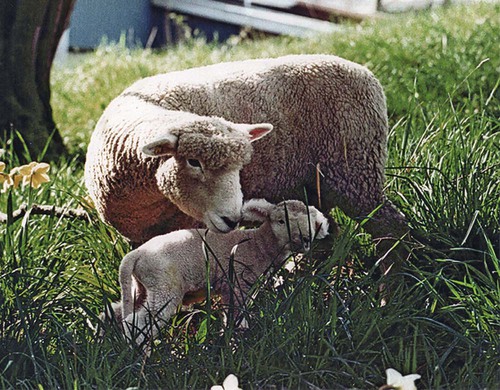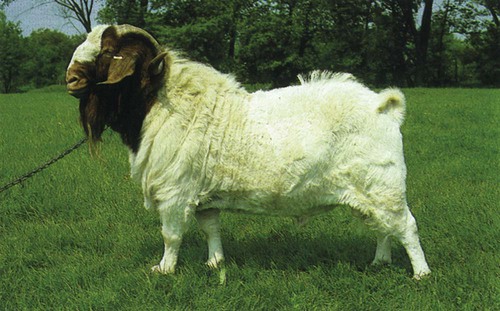When you have completed this chapter, you will be able to • Know and understand the zoologic classification of the species • Know and be able to proficiently use terminology associated with this species • Know normal physiologic data for the species and be able to identify abnormal data • Identify and know the uses of common instruments relevant to the species • Describe prominent anatomical or physiologic properties of the species • Identify and describe characteristics of common breeds • Describe normal living environments and husbandry needs of the species • Understand and describe specific reproductive practices of the species • Understand specific nutritional requirements of the species Table 14-1 lists common terminology used to describe the age and breeding status of sheep and goats. Table 14-2 lists normal physiologic data for sheep and goats. TABLE 14-1 TABLE 14-2 Merino sheep originated in Spain. The three types of Merinos are A, B, and C. The A and B types have wrinkled skin. Type A is more wrinkled than type B. Type A and B Merinos are called American Merinos. The type C Merino, called the Delaine Merino, has very little wrinkle to the skin. The Delaine Merino tends to be more popular in the United States. It is a medium size and has an angular body. The Delaine Merino has a white face and legs with white wool on the head and legs. The skin is pale. The rams are horned, and the ewes are polled (Fig. 14-3). The Rambouillet originated in France and was developed from the Spanish Merino. The breed is known for its large, angular, blocky body type. It has a white face and legs with white wool on the head and legs. The Rambouillet has pale skin. The rams are polled or horned. All ewes are polled. The breed is primarily raised for wool production and is common in the western states (Fig. 14-4). The Cheviot originated in northern England and southern Scotland. It has a small blocky body type. It has a white face and legs with black hooves and black nostrils. The head and legs are free of wool, and the skin is pink. The breed is polled and has small erect ears (Fig. 14-5). The Corriedale originated in New Zealand. It was the result of crossing a Lincoln and Leicester rams with Merino ewes. The Corriedale has a white face, ears, and legs with wool on the head and legs. The body size is medium to large size a blocky appearance. The breed is polled (Fig. 14-6). The Dorset originated in southern England. The Dorset is of medium size and has a blocky body type. The ears, nose, face, and legs are white, with wool on the head and legs. The skin of this breed is pink. The strains are both polled and horned. The ewes will breed out of season, so fall lambs can be produced (Fig. 14-7). Finnish sheep originated in Finland. Finnish sheep are a medium-sized breed used for fleece and meat. The breed is commonly used in crossbreeding programs to increase lambing crops. Finnish ewes commonly have triplets, and many have four to six lambs yearly. One of the most notable characteristics is the naturally short tail. The tail should never be docked and be covered with hair at the end. When crossbred, the tail gets noticeably longer. The breed has a white ears, nose, face, and legs, with the head and legs free of wool. The skin is pink. The breed is considered polled, although some rams may have horns (Fig. 14-8). The Hampshire breed originated in southern England. The Hampshire is large and has a blocky body type. The face, legs, ears, and nose are black. It has wool on the head and legs. The head of a Hampshire has a slight roman nose. The skin has a dark pigment, and the ears are held horizontally to the head. The breed is polled. Hampshires are one of the more popular breeds in the Midwest (Fig. 14-9). The Montadale originated in the United States. The breed is a medium to large breed with a blocky body type. The breed has a white face, ears, and legs. The head and legs are free of wool. The skin is pink. The ears are a medium size and are carried somewhat erect. This breed is polled (Fig. 14-10). The Oxford breed originated in England. It has a large frame with a brown-gray face and legs. It has wool on the legs and head that extends over the poll down to the eyes. Its skin is pink, and its short ears are set horizontal to the heads. The breed is polled (Fig. 14-11). The Romanov originated in the USSR. It has a smaller body type than other medium wool breeds. It has a mottled face, and the head and legs are free of wool. The breed also has dark pigmented skin. This breed of sheep is particularly known for its prolificacy and maternal strengths, commonly producing litters of four to six lambs (Figs. 14-13 and 14-14). The Southdown originated in England. It is a moderately framed sheep with well-balanced confirmation. Yearling rams in moderate flesh weigh 225 to 250 lb. Yearling ewes typically weigh between 160 and 200 lb. The Southdown breed has a light brown face and legs with wool on the head and legs. The breed also has medium ears that are carried slightly erect. The breed is polled (Fig. 14-16). The Suffolk breed originated in southern England. The Suffolk has a large blocky body type. The face, ears, and legs are black. The breed is polled and has no wool on the head or legs. It has a large drooping ear with pink to gray skin and a slight roman nose. The Suffolk is popular for producing market lambs in the United States (Fig. 14-17). The Cotswold is an old breed of sheep that originated in England. It has a large blocky body type that is firm and solid to the touch. The body is covered with thick, long, lustrous wool composed of wavy curls that extend to the legs. The head is wide between the eyes and is distinguished by a fine tuft of wool on the forehead. The face and legs are white, although a grayish-white color is not objectionable. Dark spots may occur on the face and legs. The breed is polled (Fig. 14-18). The Leicester originated in England. It has a large, blocky body type. The breed has a white face and legs. The head and legs are free of wool. It has a roman nose with black nostrils and pink skin. The ears are somewhat erect. The Leicester is white and polled. The fleece does not provide them with good protection from the weather, so it tends to become wet and chilled (Fig. 14-19). The Lincoln originated in England. The Lincoln is large and has a blocky body type. It is white with a white face and legs. The wool covers part of the head and legs. The breed is polled and produces long, lustrous, ringlets of wool. This breed is commonly used in crossbreeding programs (Fig. 14-20). The American Romney traces its beginnings to Kent, England. The Romney is a versatile white-faced breed that has the ability to produce quality meat and wool under diverse climate conditions and management systems. It has a relatively broad face, large clear eyes, and alert, thick felted ears. White ears are desirable, but minor black spots are acceptable. The nostrils should be black or dark, mottled gray. The poll should be free of horns and hair. The back is smooth, blending from the neck and ending at a square rump. Black hooves are desirable. Sheep of this breed can be registered with the American Romney Breeders Association (Fig. 14-21). The boer goat originated in the Easter cape province of South Africa in the early 1900s. Current breed standards are a white color with a red head and white blaze. A few red patches are allowed, and a pigmented skin is preferred. The breed is horned and has a roman nose. Polled individuals occur occasionally. Mature females weigh 200 to 265 lb. The breed is prolific, with a common kidding rate of 200%. Because Boer goats have an extended breeding season, three kiddings every 2 years are possible (Fig. 14-22).
Ovine and Caprine Husbandry
Zoologic Classification
Sheep
Kingdom
Animal
Phylum
Chordata
Class
Mammalia
Order
Artiodactyla
Family
Bovidae
Genus
Ovis
Species
Aries
Terminology and Physiologic Data
Sheep
Goats
Adult female
Ewe
Doe/nanny
Adult male
Ram
Buck/billy
Castrated male
Wether
Wether
Immature female
Yearling ewe
Yearling doe
Neonate
Lamb
Kid
Castrated neonate
Wether lamb
Intact male neonate
Ram lamb
Buck kid
Female lamb
Ewe lamb
Doe kid
Act of parturition
Lambing
Kidding
Sheep
Goats
Temperature
101–104°F
101–104°F
Pulse rate
70–90/min
70–90/min
Respiratory rate
12–25 breaths/min
12–30 breaths/min
Adult weight
Varies by breed
Varies by breed
Breeds of Sheep
Fine Wool Breeds
Merino
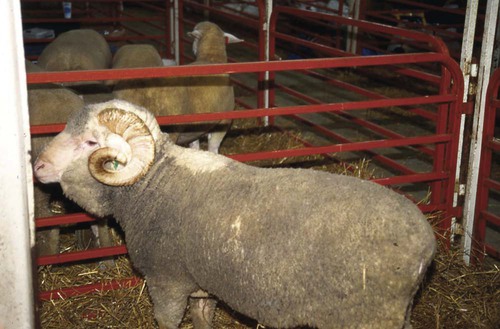
Rambouillet
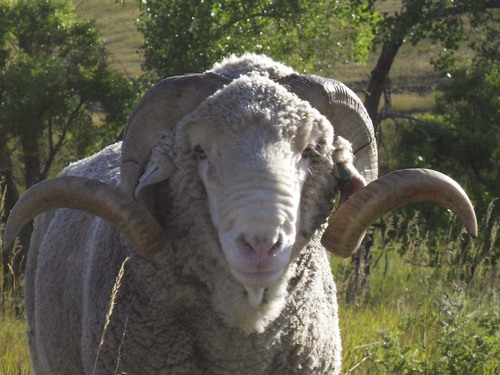
Medium Wool Breeds
Cheviot
Corriedale
Dorset
Finnish Sheep
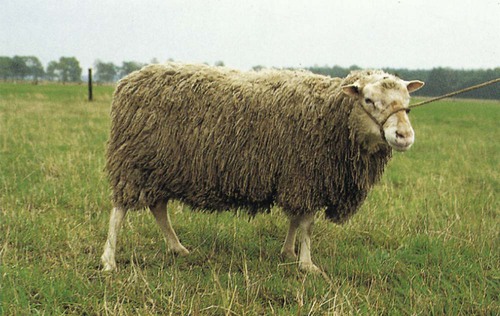
Hampshire
Montadale
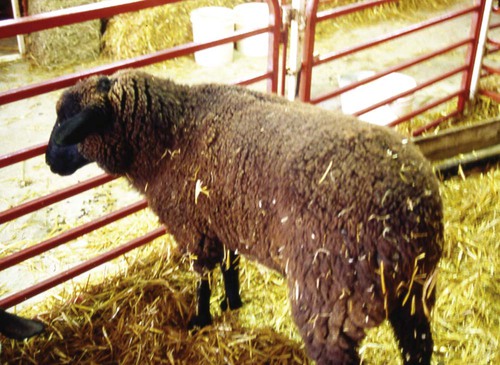
Oxford
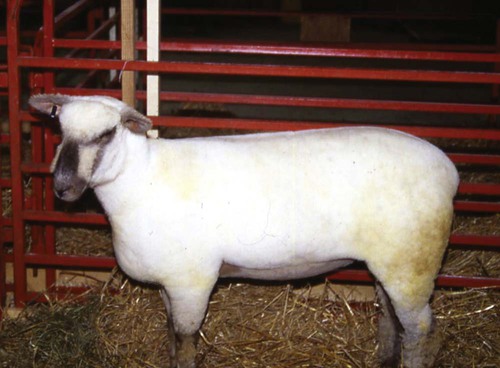
Romanov
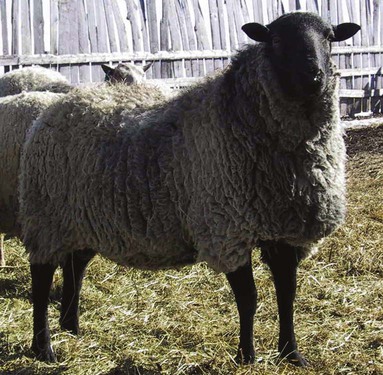
Southdown
Suffolk
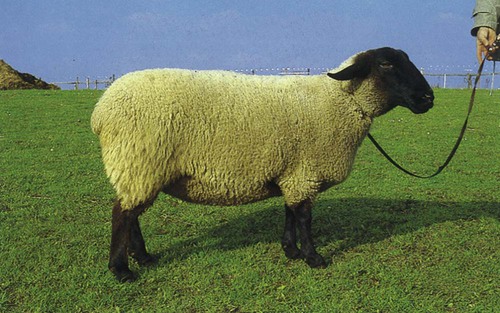
Long Wool Breeds
Cotswold
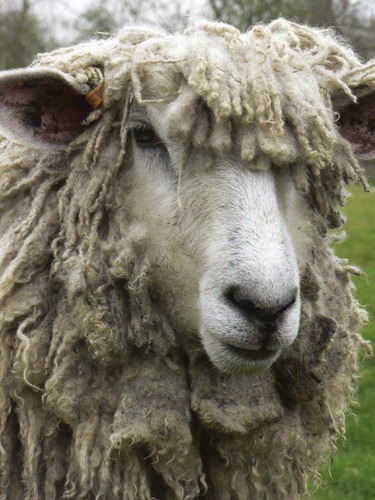
Leicester
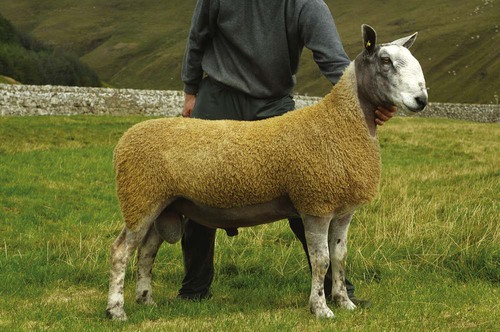
Lincoln
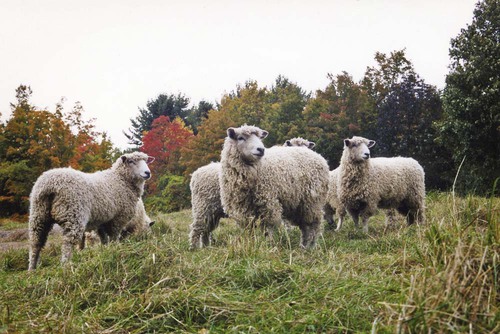
Romney
Breeds of Goat
Common Meat Breeds
Boer Goats
![]()
Stay updated, free articles. Join our Telegram channel

Full access? Get Clinical Tree


Veterian Key
Fastest Veterinary Medicine Insight Engine

